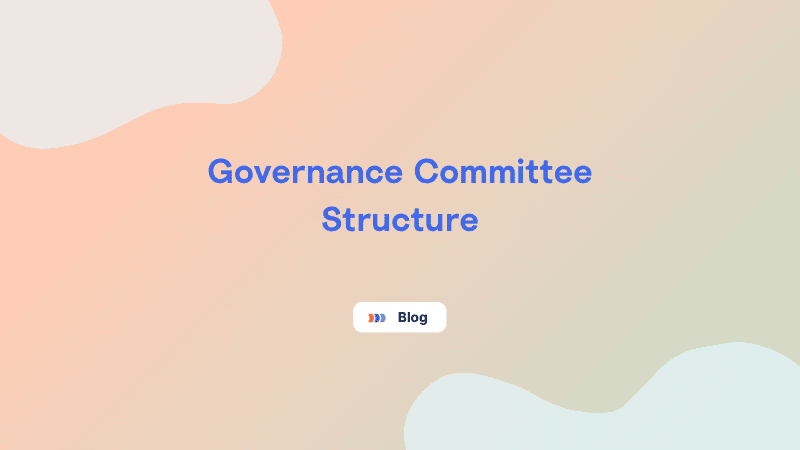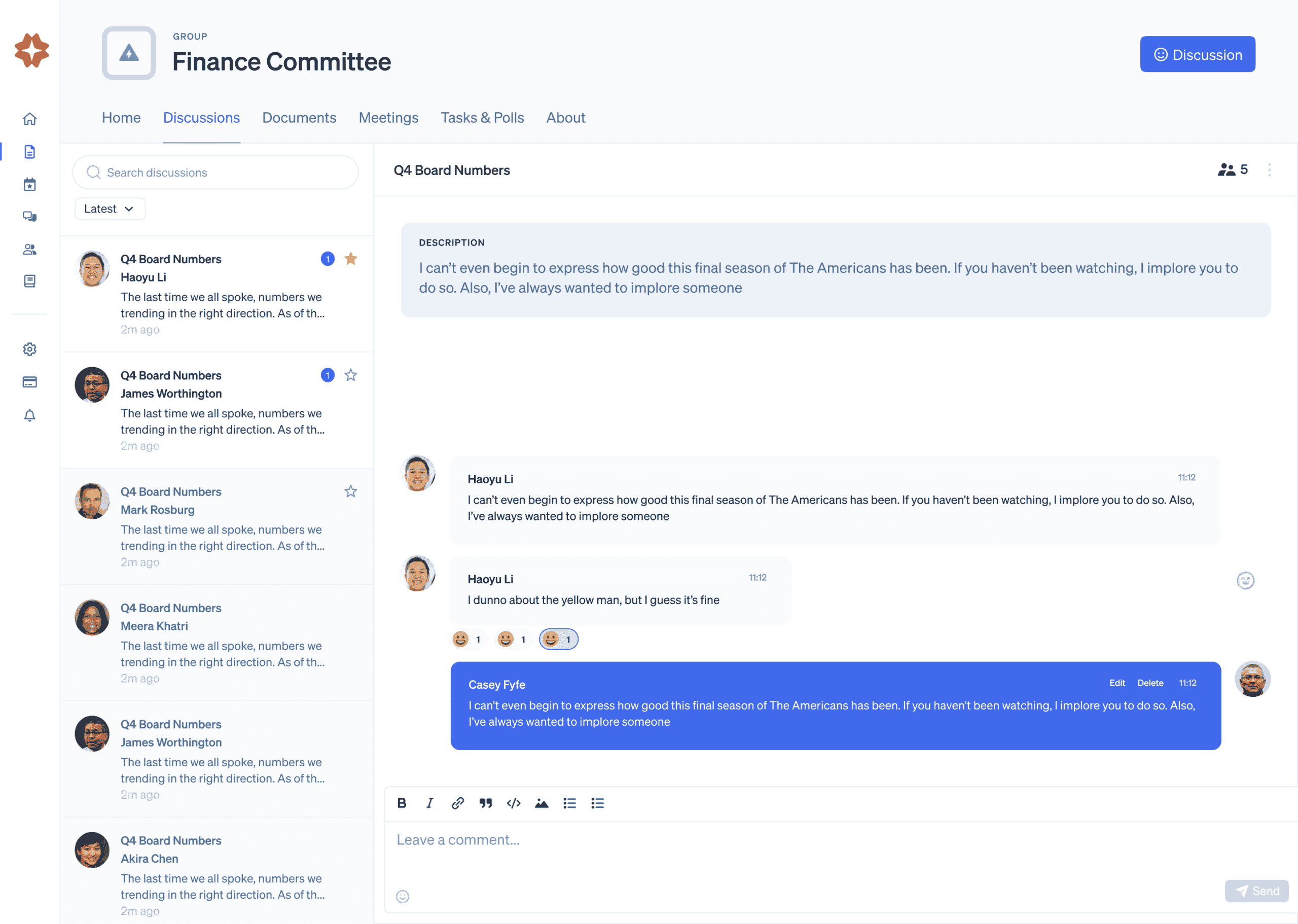Boards establish committees to address specific issues. A list of committees in an organization may be very long because committees are so effective. Some examples include an executive committee, finance committee, and board governance committee. The executive committee is a familiar term; but, what exactly is an executive committee?
The executive committee is a subset of the board of directors. Roles and responsibilities of the executive committee include making decisions between board meetings. With special authority and responsibility, the executive committee can make quick decisions. When facing urgent matters, this special authority is imperative for an organization to move forward.
You may wonder what the difference is between the executive committee vs board of directors? The executive committee is much smaller than the board of directors. With only about three to seven members, the executive committee often meets weekly. The committee reports to the board of directors but only acts on behalf of the board in urgent matters.
The board of directors is much larger than the executive committee. It includes a group of thirty or more that may only meet once or twice a year. The board of directors acts as an organization’s primary governing body. Committees often serve as resources for various issues that the board of directors may face.
The board governance committee is the board of directors’ primary resource for governance issues. It oversees board compliance with a company’s board governance framework. The roles include the people and responsibilities on the board.
The board governance committee structure example includes executive and non-executive directors. The company secretary is also part of the board governance committee. Responsibilities of the board governance committee include compliance monitoring. An organization’s articles, bylaws, and constitution outline the board’s obligations. The committee ensures compliance with the outlined obligations.
Another responsibility of the committee is recruiting new board members. This committee also makes recommendations about existing board members. Other responsibilities include ongoing training for board members. The committee operates in an advisory role reporting directly to the entire board of directors. The board of directors performs periodic reviews of the board governance committee. The board has the authority to balance the power of the committee. The board governance committee is critical to a company’s ability to maintain good governance practices.
Governance Committee Checklist
The board governance committee oversees the board of directors for your company and oversee who serves on the board. The committee also has input in the hiring process for executive roles within the company. In addition to the hiring process, their input extends to deciding compensation packages for executives. Goals for a governance committee will usually include board compliance with a company’s governance framework. The governance committee helps companies maintain compliance with industry, state, and federal regulations.
A governance board falls within the board of directors’ committee structure. The committee structure separates responsibilities for internal and external purposes. Using a board governance checklist helps establish the board’s definition and responsibilities. A board governance checklist outlines the governance committee’s best practices as well as important tasks that the committee may be responsible for.
For example, the board governance checklist may consist of:
- Tracking board skills
- Enlisting new board members
- Developing potential board members
- Self-assessments of board performance
- Monitoring board meetings
- Enforcing term limits
- Ensuring good governance practices
- Monitoring board member involvement
- Organizing social time
- Managing continued education
The board of directors established the governance sub-committee terms of reference. The terms of reference define the authority they delegate to the board governance subcommittee. This may include some of the things listed above as well as additional areas of authority that are specific to that industry.
Board Governance Responsibilities
The board governance committee is the primary resource for all governance issues. The committee must stay up to date on governance trends. They must also monitor the performance of the board of directors. Continued education covering industry compliance, new regulations, and technology also often falls under the committee responsibilities.
The responsibilities are vast with far-reaching authority and plays a role in appointing company executives and determining compensation packages for each role. Best practices for the board governance committee also include periodic self-evaluation. The self-evaluation process occurs using individual committee member feedback. In addition to self-evaluation, the entire board of directors conducts regular reviews of the committee to ensure that goals are being met and important tasks are completed.
Governance committee best practices include a governance committee charter template. The charter template answers the question, “what is the role of a governance board?” The charter defines the roles and responsibilities of committee members. Also, the charter develops the committee meeting schedule.
The committee establishes meeting processes such as minute requirements and reporting procedures. What is a corporate governance committee vs. another form of governance committee? Different industries or sectors of business have governance committees. A corporate governance committee is a corporation’s board of directors subcommittee. Corporate in this refers to large companies or groups who serve a large company, business, group, or organization. Governance committees are part of corporate governance in private and public sector businesses.
Non-profit governance committees operate in many of the same ways a corporate governance committee would operate. One of the main differences is that non-profit board governance committees must also oversee compliance with non-profit status requirements.
Corporate Governance Committee
The corporate governance committee assists the board of directors. It is a subcommittee tasked with helping the board of directors fulfill its responsibilities. Being responsible to shareholders, the investment community, and potential shareholders is critical for its success. This subcommittee helps fulfill these responsibilities and recommends a set of principles to the board. The corporate committee recommends corporate principles to the board of directors. Then the corporate committee and the board decide which committee structure to apply.
Governance committee best practices require continual evaluation of each committee. Both self-evaluation and a complete review of the governance committee by the entire board of directors are important parts of holding each member accountable and making sure that important tasks are completed. A charter template is used to define the mission statement or charge of the committee. It is each committee’s best practice to include a governance committee charter.
A clear definition of the powers and authority of each committee is vital to the organization’s cohesiveness as a whole, as well as ensuring that reviews are based on a mutual understanding of what each committee has authority over and is responsible for. A charter helps companies make important decisions. Also, committee charters help committees stay up to date on the latest industry trends and requirements. Using a committee charter helps establish authority and trust in the company’s industry.
Governance Roles And Responsibilities
Governance roles and responsibilities include oversight of board compliance. The board of directors must stay compliant with the company or non-profit’s articles, bylaws, and charter. Also, they assist with establishing a board member recruitment process. This includes defining the roles and responsibilities of the board members. Governance roles and responsibilities involve regular board assessments and member recommendations.
The charter template defines the duties and expectations and best practices involve using governance frameworks. The framework establishes documentation, effective board reporting, clear agendas, and thorough minute-taking processes, all of which ensure that there is a mutual understanding of what is happening when it is happening, and how decisions are made.
Managing a board and committees is no easy task. In the past, governance committees’ roles and responsibilities included mountains of manual paperwork and in-person meeting coordination. Boardable takes the roles and responsibilities of the board to a digital platform. By simplifying tasks like digital record keeping, minute taking, management of board members, and more, board solutions allow the corporate governance committee to operate more effectively and efficiently. Start free today with Boardable.

